#Soviet atomic bomb test
Text


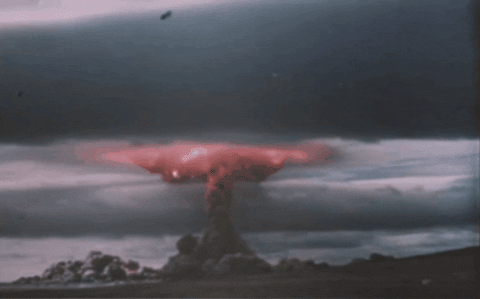
First air-dropped Soviet atomic bomb test (Joe 3) Semipalatinsk Test Site USSR 1951
#First air-dropped#Soviet atomic bomb test#bomb test#atomic bomb#nuclear weapons#weapons of mass destruction#Semipalatinsk#semipalatinsk test site#kazakhstan#my gif#gifs#my gifs#my edit#gif
114 notes
·
View notes
Text

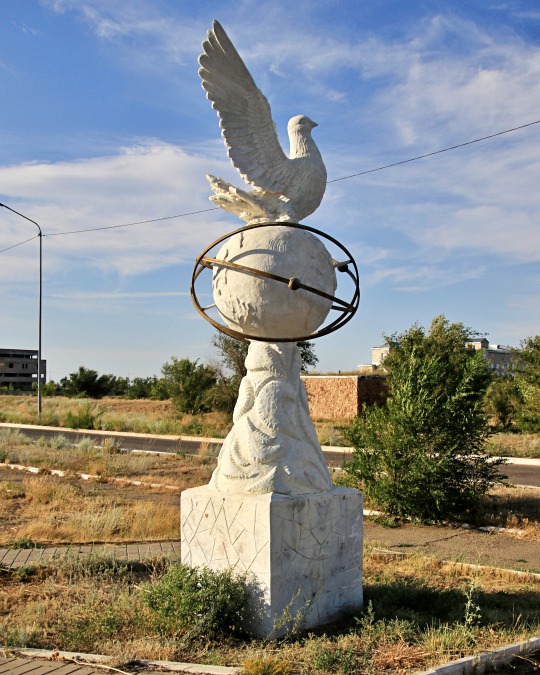
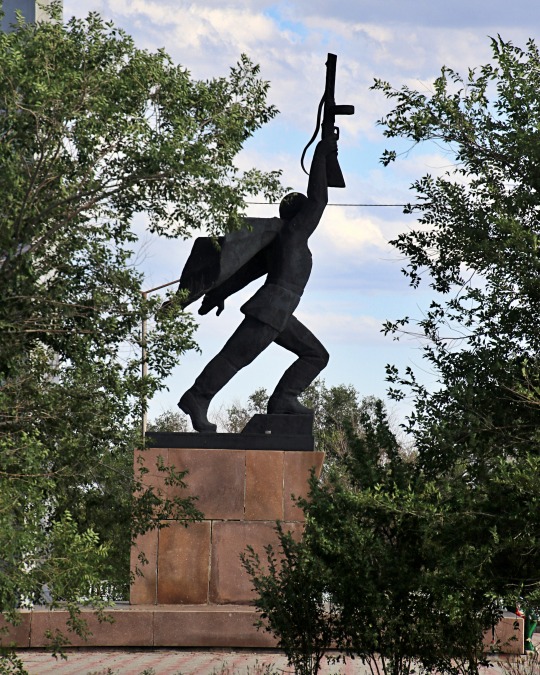


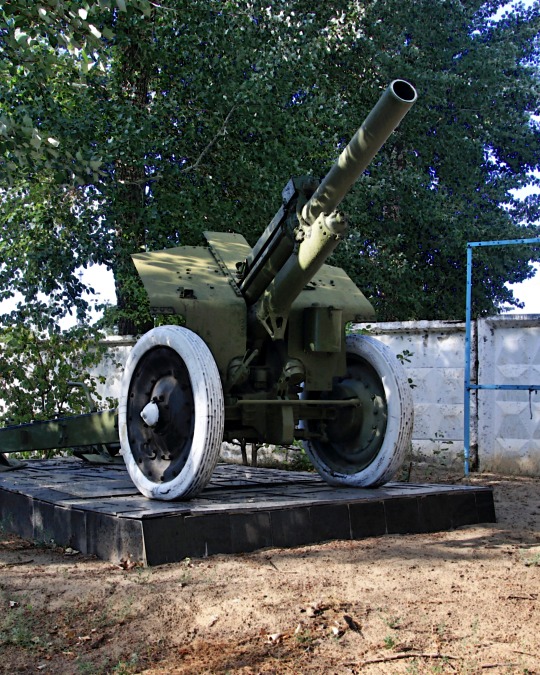
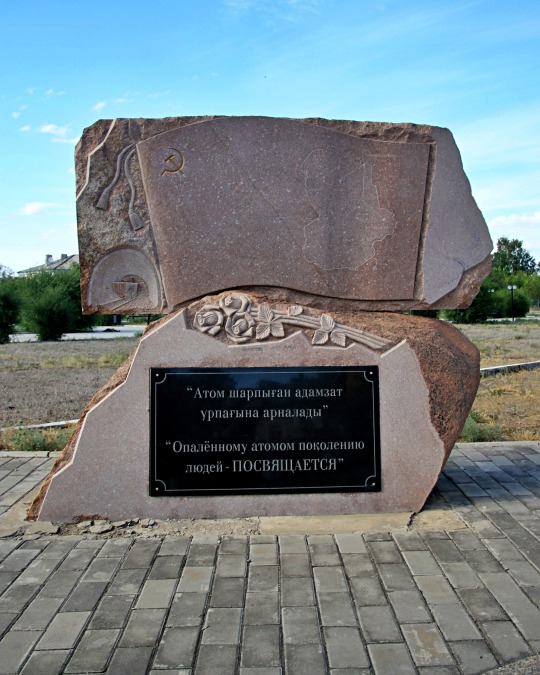
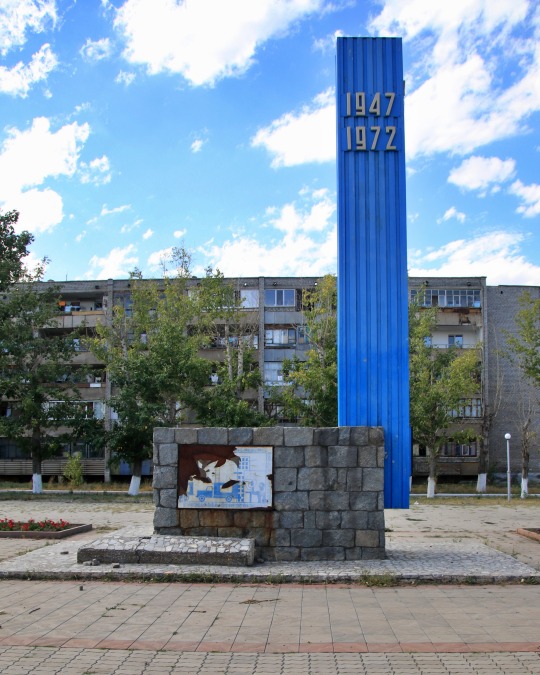


post-soviet town Kurchatov ( Kazakhstan ) - the former operations center for the adjoining Semipalatinsk Nuclear Test Site
#travelphotography#photooftheday#adventure#aroundtheworld#landscape#monuments#kazakhstan#kurchatov#soviet union#soviet art#soviet aesthetic#atom bomb#nuclear testing#ussr#explore#travel#history daily#kazakhstantravel#pickoftheday#semipalatinsktestsite#nuclear bomb#nature#cccp#atom
9 notes
·
View notes
Text
In light of Fall Out Boy’s GARBAGE cover of the song. Let’s learn about the original. Notice how they’re actually in chronological order instead of just random references 😒😒😒😒
1949
Harry Truman was inaugurated as U.S. president after being elected in 1948 to his own term; previously he was sworn in following the death of Franklin D. Roosevelt. He authorized the use of atomic bombs on Hiroshima and Nagasaki in Japan during World War II, on August 6 and August 9, 1945, respectively.
Doris Day enters the public spotlight with the films My Dream Is Yours and It’s a Great Feeling as well as popular songs like “It’s Magic”; divorces her second husband.
Red China: The Communist Party of China wins the Chinese Civil War, establishing the People’s Republic of China.
Johnnie Ray signs his first recording contract with Okeh Records, although he would not become popular for another two years.
South Pacific, the prize-winning musical, opens on Broadway on April 7.
Walter Winchell is an aggressive radio and newspaper journalist credited with inventing the gossip column.
Joe DiMaggio and the New York Yankees go to the World Series five times in the 1940s, winning four of them.
1950
Joe McCarthy, the US Senator, gains national attention and begins his anti-communist crusade with his Lincoln Day speech.
Richard Nixon is first elected to the United States Senate.
Studebaker, a popular car company, begins its financial downfall.
Television is becoming widespread throughout Europe and North America.
North Korea and South Korea declare war after Northern forces stream south on June 25.
Marilyn Monroe soars in popularity with five new movies, including The Asphalt Jungle and All About Eve, and attempts suicide after the death of friend Johnny Hyde who asked to marry her several times, but she refused respectfully. Monroe would later (1954) be married for a brief time to Joe DiMaggio (mentioned in the previous verse).
1951
The Rosenbergs, Ethel and Julius, were convicted on March 29 for espionage.
H-Bomb is in the middle of its development as a nuclear weapon, announced in early 1950 and first tested in late 1952.
Sugar Ray Robinson, a champion welterweight boxer.
Panmunjom, the border village in Korea, is the location of truce talks between the parties of the Korean War.
Marlon Brando is nominated for the Academy Award for Best Actor for his role in A Streetcar Named Desire.
The King and I, musical, opens on Broadway on March 29.
The Catcher in the Rye, a controversial novel by J. D. Salinger, is published.
1952
Dwight D. Eisenhower is first elected as U.S. president, winning by a landslide margin of 442 to 89 electoral votes.
The vaccine for polio is privately tested by Jonas Salk.
England’s got a new queen: Queen Elizabeth II succeeds to the throne upon the death of her father, George VI, and is crowned the next year.
Rocky Marciano defeats Jersey Joe Walcott, becoming the world Heavyweight champion.
Liberace has a popular 1950s television show for his musical entertainment.
Santayana goodbye: George Santayana, philosopher, essayist, poet, and novelist, dies on September 26.
1953
Joseph Stalin dies on March 5, yielding his position as leader of the Soviet Union.
Georgy Maksimilianovich Malenkov succeeds Stalin for six months following his death. Malenkov had presided over Stalin’s purges of party “enemies”, but would be spared a similar fate by Nikita Khrushchev mentioned later in verse.
Gamal Abdel Nasser acts as the true power behind the new Egyptian nation as Muhammad Naguib’s minister of the interior.
Sergei Prokofiev, the composer, dies on March 5, the same day as Stalin.
Winthrop Rockefeller and his wife Barbara are involved in a highly publicized divorce, culminating in 1954 with a record-breaking $5.5 million settlement.
Roy Campanella, an African-American baseball catcher for the Brooklyn Dodgers, receives the National League’s Most Valuable Player award for the second time.
Communist bloc is a group of communist nations dominated by the Soviet Union at this time. Probably a reference to the Uprising of 1953 in East Germany.
1954
Roy Cohn resigns as Joseph McCarthy’s chief counsel and enters private practice with the fall of McCarthy. He also worked to prosecute the Rosenbergs, mentioned earlier.
Juan Perón spends his last full year as President of Argentina before a September 1955 coup.
Arturo Toscanini is at the height of his fame as a conductor, performing regularly with the NBC Symphony Orchestra on national radio.
Dacron is an early artificial fiber made from the same plastic as polyester.
Dien Bien Phu falls. A village in North Vietnam falls to Viet Minh forces under Vo Nguyen Giap, leading to the creation of North Vietnam and South Vietnam as separate states.
“Rock Around the Clock” is a hit single released by Bill Haley & His Comets in May, spurring worldwide interest in rock and roll music.
1955
Albert Einstein dies on April 18 at the age of 76.
James Dean achieves success with East of Eden and Rebel Without a Cause, gets nominated for an Academy Award for Best Actor, and dies in a car accident on September 30 at the age of 24.
Brooklyn’s got a winning team: The Brooklyn Dodgers win the World Series for the only time before their move to Los Angeles.
Davy Crockett is a Disney television miniseries about the legendary frontiersman of the same name. The show was a huge hit with young boys and inspired a short-lived “coonskin cap” craze.
Peter Pan is broadcast on TV live and in color from the 1954 version of the stage musical starring Mary Martin on March 7. Disney released an animated version the previous year.
Elvis Presley signs with RCA Records on November 21, beginning his pop career.
Disneyland opens on July 17, 1955 as Walt Disney’s first theme park.
1956
Brigitte Bardot appears in her first mainstream film And God Created Woman and establishes an international reputation as a French “sex kitten”.
Budapest is the capital city of Hungary and site of the 1956 Hungarian Revolution.
Alabama is the site of the Montgomery Bus Boycott which ultimately led to the removal of the last race laws in the USA. Rosa Parks and Martin Luther King, Jr figure prominently.
Nikita Khrushchev makes his famous Secret Speech denouncing Stalin’s “cult of personality” on February 25.
Princess Grace Kelly releases her last film, High Society, and marries Prince Rainier III of Monaco.
Peyton Place, the best-selling novel by Grace Metalious, is published. Though mild compared to today’s prime time, it shocked the reserved values of the 1950s.
Trouble in the Suez: The Suez Crisis boils as Egypt nationalizes the Suez Canal on October 29.
1957
Little Rock, Arkansas is the site of an anti-integration standoff, as Governor Orval Faubus stops the Little Rock Nine from attending Little Rock Central High School and President Dwight D. Eisenhower deploys the 101st Airborne Division to counteract him.
Boris Pasternak, the Russian author, publishes his famous novel Doctor Zhivago.
Mickey Mantle is in the middle of his career as a famous New York Yankees outfielder and American League All-Star for the sixth year in a row.
Jack Kerouac publishes his first novel in seven years, On the Road.
Sputnik becomes the first artificial satellite, launched by the Soviet Union on October 4, marking the start of the space race.
Chou En-Lai, Premier of the People’s Republic of China, survives an assassination attempt on the charter airliner Kashmir Princess.
Bridge on the River Kwai is released as a film adaptation of the 1954 novel and receives seven Academy Awards, including Best Picture.
1958
Lebanon is engulfed in a political and religious crisis that eventually involves U.S. intervention.
Charles de Gaulle is elected first president of the French Fifth Republic following the Algerian Crisis.
California baseball begins as the Brooklyn Dodgers and New York Giants move to California and become the Los Angeles Dodgers and San Francisco Giants. They are the first major league teams west of Kansas City.
Charles Starkweather Homicide captures the attention of Americans, in which he kills eleven people between January 25 and 29 before being caught in a massive manhunt in Douglas, Wyoming.
Children of Thalidomide: Mothers taking the drug Thalidomide had children born with congenital birth defects caused by the sleeping aid and antiemetic, which was also used at times to treat morning sickness.
1959
Buddy Holly dies in a plane crash on February 3 with Ritchie Valens and The Big Bopper, in a day that had a devastating impact on the country and youth culture. Joel prefaces the lyric with a Holly signature vocal hiccup: “Uh-huh, uh-huh.”
Ben-Hur, a film based around the New Testament starring Charlton Heston, wins eleven Academy Awards, including Best Picture.
Space Monkey: Able and Miss Baker return to Earth from space aboard the flight Jupiter AM-18.
The Mafia are the center of attention for the FBI and public attention builds to this organized crime society with a historically Sicilian-American origin.
Hula hoops reach 100 million in sales as the latest toy fad.
Fidel Castro comes to power after a revolution in Cuba and visits the United States later that year on an unofficial twelve-day tour.
Edsel is a no-go: Production of this car marque ends after only three years due to poor sales.
1960
U-2: An American U-2 spy plane piloted by Francis Gary Powers was shot down over the Soviet Union, causing the U-2 Crisis of 1960.
Syngman Rhee was rescued by the CIA after being forced to resign as leader of South Korea for allegedly fixing an election and embezzling more than US $20 million.
Payola, illegal payments for radio broadcasting of songs, was publicized due to Dick Clark’s testimony before Congress and Alan Freed’s public disgrace.
John F. Kennedy beats Richard Nixon in the November 8 general election.
Chubby Checker popularizes the dance The Twist with his cover of the song of the same name.
Psycho: An Alfred Hitchcock thriller, based on a pulp novel by Robert Bloch and adapted by Joseph Stefano, which becomes a landmark in graphic violence and cinema sensationalism. The screeching violins heard briefly in the background of the song are a trademark of the film’s soundtrack.
Belgians in the Congo: The Republic of the Congo (Leopoldville) was declared independent of Belgium on June 30, with Joseph Kasavubu as President and Patrice Lumumba as Prime Minister.
1961
Ernest Hemingway commits suicide on July 2 after a long battle with depression.
Adolf Eichmann, a “most wanted” Nazi war criminal, is traced to Argentina and captured by Mossad agents. He is covertly taken to Israel where he is put on trial for crimes against humanityin Germany during World War II, convicted, and hanged.
Stranger in a Strange Land, written by Robert A. Heinlein, is a breakthrough best-seller with themes of sexual freedom and liberation.
Bob Dylan is signed to Columbia Records after a New York Times review by critic Robert Shelton.
Berlin is separated into West Berlin and East Berlin, and from the rest of East Germany, when the Berlin Wall is erected on August 13 to prevent citizens escaping to the West.
The Bay of Pigs Invasion fails, an attempt by United States-trained Cuban exiles to invade Cuba and overthrow Fidel Castro.
1962
Lawrence of Arabia: The Academy Award-winning film based on the life of T. E. Lawrence starring Peter O’Toole premieres in America on December 16.
British Beatlemania: The Beatles, a British rock group, gain Ringo Starr as drummer and Brian Epstein as manager, and join the EMI’s Parlophone label. They soon become the world’s most famous rock band, with the word “Beatlemania” adopted by the press for their fans’ unprecedented enthusiasm. It also began the British Invasion in the United States.
Ole’ Miss: James Meredith integrates the University of Mississippi
John Glenn: Flew the first American manned orbital mission termed “Friendship 7” on February 20.
Liston beats Patterson: Sonny Liston and Floyd Patterson fight for the world heavyweight championship on September 25, ending in a first-round knockout. This match marked the first time Patterson had ever been knocked out and one of only eight losses in his 20-year professional career.
1963
Pope Paul VI: Cardinal Giovanni Montini is elected to the papacy and takes the papal name of Paul VI.
Malcolm X makes his infamous statement “The chickens have come home to roost” about the Kennedy assassination, thus causing the Nation of Islam to censor him.
British politician sex: The British Secretary of State for War, John Profumo, has a relationship with a showgirl, and then lies when questioned about it before the House of Commons. When the truth came out, it led to his own resignation and undermined the credibility of the Prime Minister.
JFK blown away: President John F. Kennedy is assassinated on November 22 while riding in an open convertible through Dallas.
1965
Birth control: In the early 1960s, oral contraceptives, popularly known as “the pill”, first go on the market and are extremely popular. Griswold v. Connecticut in 1965 challenged a Connecticut law prohibiting contraceptives. In 1968, Pope Paul VI released a papal encyclical entitled Humanae Vitae which declared artificial birth control a sin.
Ho Chi Minh: A Vietnamese communist, who served as President of Vietnam from 1954–1969. March 2 Operation Rolling Thunder begins bombing of the Ho Chi Minh Trail supply line from North Vietnam to the Vietcong rebels in the south. On March 8, the first U.S. combat troops, 3,500 marines, land in South Vietnam.
1968
Richard Nixon back again: Former Vice President Nixon is elected President in 1968.
1969
Moonshot: Apollo 11, the first manned lunar landing, successfully lands on the moon.
Woodstock: Famous rock and roll festival of 1969 that came to be the epitome of the counterculture movement.
1974–75
Watergate: Political scandal that began when the Democratic National Committee’s headquarters at the Watergate office complex in Washington, DC was broken into. After the break-in, word began to spread that President Richard Nixon (a Republican) may have known about the break-in, and tried to cover it up. The scandal would ultimately result in the resignation of President Nixon, and to date, this remains the only time that anyone has ever resigned the United States Presidency.
Punk rock: The Ramones form, with the Sex Pistols following in 1975, bringing in the punk era.
1976–77
(An item from 1977 comes before three items from 1976 to make the song scan.)
Menachem Begin becomes Prime Minister of Israel in 1977 and negotiates the Camp David Accords with Egypt’s president in 1978.
Ronald Reagan was elected President of the United States in 1980, but he first attempted to run for the position in 1976.
Palestine: a United Nations resolution that calls for an independent Palestinian state and to end the Israeli occupation.
Terror on the airline: Numerous aircraft hijackings take place, specifically, the Palestinian hijack of Air France Flight 139 and the subsequent Operation Entebbe in Uganda.
1979
Ayatollah’s in Iran: During the Iranian Revolution of 1979, the West-backed and secular Shah is overthrown as the Ayatollah Ruhollah Khomeini gains power after years in exile and forces Islamic law.
Russians in Afghanistan: Following their move into Afghanistan, Soviet forces fight a ten-year war, from 1979 to 1989.
1983
Wheel of Fortune: A hit television game show which has been TV’s highest-rated syndicated program since 1983.
Sally Ride: In 1983 she becomes the first American woman in space. Ride’s quip from space “Better than an E-ticket”, harkens back to the opening of Disneyland mentioned earlier, with the E-ticket purchase needed for the best rides.
Heavy metal suicide: In the 1980s Ozzy Osbourne and the bands Judas Priest and Metallica were brought to court by parents who accused the musicians of hiding subliminal pro-suicide messages in their music.
Foreign debts: Persistent U.S. trade deficits
Homeless vets: Veterans of the Vietnam War, including many disabled ex-military, are reported to be left homeless and impoverished.
AIDS: A collection of symptoms and infections in humans resulting from the specific damage to the immune system caused by infection with the human immunodeficiency virus (HIV). It is first detected and recognized in the 1980s, and was on its way to becoming a pandemic.
Crack cocaine use surged in the mid-to-late 1980s.
1984
Bernie Goetz: On December 22, Goetz shot four young men who he said were threatening him on a New York City subway. Goetz was charged with attempted murder but was acquitted of the charges, though convicted of carrying an unlicensed gun.
1988
Hypodermics on the shore: Medical waste was found washed up on beaches in New Jersey after being illegally dumped at sea. Before this event, waste dumped in the oceans was an “out of sight, out of mind” affair. This has been cited as one of the crucial turning points in popular opinion on environmentalism.
1989
China’s under martial law: On May 20, China declares martial law, enabling them to use force of arms against protesting students to end the Tiananmen Square protests.
Rock-and-roller cola wars: Soft drink giants Coke and Pepsi each run marketing campaigns using rock & roll and popular music stars to reach the teenage and young adult demographic.
Short summaries of all 119 references mentioned in the song, you’re welcome.
#look fall out boy is one of my fave bands but this is inexcusable#fall out boy#Billy Joel#music#Spotify
291 notes
·
View notes
Text
ok some thoughts about oppenheimer:
watching oppenheimer then going home surrounded by a scary number of continuous silent lightnings was... something.
i've seen almost every movie cillian murphy has done but i'm always amazed by his talent. he is so good. sooooooo good. he says everything with his eyes and he can portray such a large variety of emotions. and such a different degree of intensity of those emotions. at the end of the movie, when oppenheimer is accused of being a soviet spy he simply brings a hand to his face and yet i felt all of the hopelessness. ALL of it. while he was COVERING his face. cillian murphy, the man you are
didn't expect robert downey jr. to be so good. he was great.
i felt like i needed less information yet more (?): i kind of got lost a little bit sometimes because there's so many characters (whose lives and achievements aren't explained enough) and information but maybe it was my problem. someone told me it's oppenheimer's even slightly egocentric POV so... it has to be like that. might be. nevertheless i sometimes felt like i needed to know more. i also think if i were to make a movie about something i knew a lot about or something that it's so difficult and i knew more than the general public i wouldn't waste half the movie explaining stuff. so i get this as well.
when florence pugh's character commits suicide i saw a hand that wasn't supposed to be there. turns out it's a hint to the theory she didn't commit suicide but was killed. this makes me think that if i knew more i would've enjoyed the movie more. so i would like to watch it again.
the trinity test scene didn't impress me as much as i thought it would. i blame david lynch and his twin peaks season 3 episode 8. god, THAT disturbed me. it was TERRIFYING.
i usually find nolan's movies uselessly brainy and too cold. this was usefully brainy and less cold than usual. cillian murphy's acting helped.
loved how political it was. loved how the focus wasn't just on the moral dilemma but on the second red scare as well since i feel like hollywood movies usually have a latent mccarthyism to them.
that scene when he is making a speech and just sees everyone struck by the atomic bomb. and then he ends up crushing a burned body with his foot. hauntingly beautiful.
88 notes
·
View notes
Text
Since Oppenheimer is about to come out I feel like it's time to get on my soap box about Hiroshima and Nagasaki. I see a lot of people talking about the justifications for the use of the atomic bomb in the context of whether Japan was 'defeated or not'.
Let's be clear, the bombings of Hiroshima and Nagasaki had next to nothing to do with Japan's position at the end of world war 2 and *everything* to do with the USSR's. The US themselves said in no uncertain terms that they used the atomic bomb to improve their own position at the post war negotiation table (the same can be said about the bombing of Dresden for the European theatre).
When the bomb was dropped on Hiroshima, the Soviets were literally days away from launching their land invasion of Japan. This was something the Americans had literally *begged* for right up until the final successful nuclear test. The US knew that the Red army could successfully subdue mainland Japan in a matter of weeks, saving the lives of thousands of American soldiers. However, should the USSR launch a successful invasion, it would give them the strongest position and the final say at the negotiation table when it came to discussions on whether Japan should be part of the American or Soviet sphere of influence.
Not only did the American use of the atomic bomb lock the Soviets out of involvement in Japan post war (something that allowed the Americans unrivaled influence in Japan for the next 70 years) it also significantly unbalanced the post war order. Without the atom bomb the Red army was undoubtedly the strongest military force on earth, not to mention the unparalleled loss of life experienced by the Soviet Union in WW2. Had it not been for the bomb the Soviets would have had an incredible upper hand at the post war negotiation table, something unconscionable to America.
So when you go to watch Oppenheimer, remember that the United States killed 300,000 people in a purely political move to prevent the spread of communism and give Truman a better position when it came to carving up the post WW2 world.
138 notes
·
View notes
Text
I think, before anyone wants to say anything about Israel/Palestine, they should be able to pass an easy enough litmus test:
Their opinion on Imperial Japan’s actions in the Pacific and Asia
Their opinion on the United States dropping two atomic bombs on Imperial Japan
Their knowledge of NATO
Their opinion on Russian imperialism
Their opinion on Russia invading Ukraine
Their knowledge of Jewish history (without linking to tokens like Ilan Pappé or Shlomo Sand)
Their knowledge on global autocracies
Their opinion on the Soviet Union and China
Their go-to news sources
The people they follow on social media
30 notes
·
View notes
Text
A War of Escalation
One of the old cliches in many old 50s atomic monster movies is that of the secret weapon. A powerful device that is the only thing capable of safely dispatching the monster. For example, in the 1953 classic The Beast of 20,000 Fathoms, a radioactive isotope is shot within the wound of the Rhedosaurus to put it down.
This is a very prevalent theme in many B-movies that the only way to fight a monster is to use a powerful weapon. Now these films flourished during the Cold War, where tensions between the US and the Soviet Union were high, and the fear of an all-out atomic war was used to serve as the basis for many of these monster movies. In many ways, the monster, like the Rhedosaurus, represented the enemy or their nuclear weapons, and the weapon used to dispatch it, like the radioactive isotope, was the nuclear weapon on "our side".

The implication being that nuclear warfare and weapons are bad...as long as it's in the wrong hands.
However, the 1954 classic Godzilla (or Gojira, also known as Godzilla, King of the Monsters in America) takes a much...different stance. You have to remember that it hadn't even been a decade since atomic bombs hit Hiroshima and Nagasaki, and the horrors of the Lucky Dragon Incident (where a tuna trawler got doused in radiation from the fallout of the nuclear test Castle Bravo) were fresh in the minds of the Japanese people. So, they knew full well the horrors of an atomic war.
And here lies the difference: in America, a monster that rises from the sea as a result of nuclear testing like the Rhedosaurus would've been an allegory for the enemy, or Communism. Something to be conquered.
In Japan however, Godzilla was seen as an allegory for the atom bomb itself.
Sure, in many ways the two films are similar with a nearly identical plot: a prehistoric monster rises from the sea, mutated by radiation, and wreaks havoc on civilization. But the difference is presentation. Beast focuses on the people trying to stop the Rhedosaurus and the destruction is a sort of spectacle. Godzilla's rampage though is focused on the victims themselves, and how indiscriminate it is since nobody is spared. Even the monsters themselves are different in how they're portrayed: the Rhedosaurus acts like a rampaging animal that will back off if faced with intense firepower. Godzilla on the other hand just wades through buildings, not stopped by anything the army can throw at him.
Which leads to the Oxygen Destroyer, Godzilla's version of the super weapon. Once developed as a potential source of energy, the Oxygen Destroyer was an accidental creation by the brilliant scientist Dr. Serizawa (Akihiko Hirata), who's kept it hidden lest it fall into the wrong hands. A weapon of nightmarish capabilities (stripping underwater organisms of their flesh), it might be the only thing capable of ending Godzilla's terror once and for all.
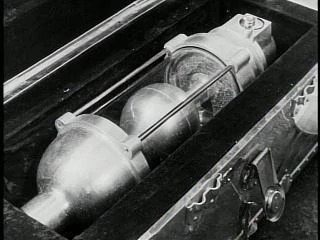
The thing is...it's not treated as being a good thing. Part of the reason Dr. Serizawa is so hesitant to use it, is because he believes that if it's used, even once, then the countries of the world is going to be scrambling to develop their own Oxygen Destroyers. And it's not like he can just say know a second time. If he used it once, then it means he can be persuaded to make another one. Another arsenal to an already destructive arms race that could potentially result in the ruin of the human race. In Serizawa's words:
"Bombs vs. bombs. Missiles vs. missiles. And now a new superweapon to throw upon us all".
Eventually though, the horrors of Godzilla get to him, persuades him to use the Oxygen Destroyer to slay the menace once and for all. But to prevent it being used again, he does so at the cost of his own life.
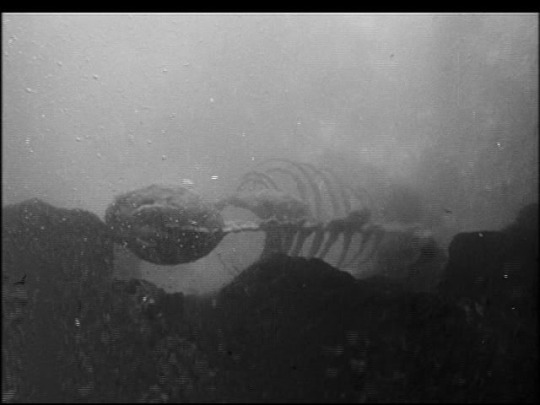
Thing is, this isn't treated as a victory. A good man lost his life to the dismay of all. And worse, it didn't end the arms race. Paleontologist Dr. Yamane (Takashi Shimura) firmly believes that given how tough Godzilla was, it's unlikely he's the last of his kind. Worse still, given that weapons of mass destruction are still in use, it's only a matter of time before another Godzilla or something like him shows up again. The victory is a respite, but not the end.
The question of killing Godzilla is brought up again and again throughout the series. While all agree he's a threat, time and again it's explored whether humanity is going too far, or creating something far worse in trying to destroy him. Hell, in Godzilla vs Destoroyah (1995), it's revealed that in one timeline a much worse monster was spawned from the Oxygen Destroyer's usage. The message is clear that while Godzilla is a problem, humanity has the potential to make something far worse. And a weapon of mass destruction is not the ultimate solution in the end. It can give you a breath, but that's all it'll give before the next spawn it created arises.
For America in the 50s, the question of nuclear weaponry is whether who should be allowed to use it. For Japan in the 50s, it was a question of whether or not it should even exist.
#Godzilla#Godzilla 1954#Gojira#godzilla king of the monsters#beast of 20000 fathoms#50s movies#kaiju#monster movies#oxygen destroyer#cold war in film#rhedosaurus
97 notes
·
View notes
Note
Would the US have dropped an atomic bomb on Germany as readily as they did on Japan?
Why? The Trinity Test was 16 July 1945, V-E Day was 8 May 1945. There'd be no reason to drop the bomb on Germany after it surrendered.
If you mean hypothetically from a bomb that is completed at an earlier date, it depends on when the bomb is ready. If it looks like Germany's on the ropes and losing on all fronts, probably not. The atomic bombings of Japan were driven primarily by the fear that Operation Downfall, the proposed invasion of the Japanese Home Islands, was projected to have massive casualties (the notion that the US bombed Japan primarily to intimidate the Soviets is largely revisionist history and has little support from contemporary source material). So in that sense, if it looks like Europe is impregnable, maybe, but with the advances in the east and the fall of Italy, probably not.
Thanks for the question, Anon.
SomethingLikeALawyer, Hand of the King
15 notes
·
View notes
Text
sorry for talking about this again it just keeps ending up on my mind
like j robert oppenheimer IS a nuanced figure when evaluated as an individual; there's a lot of context like his status as a jewish man during wwii and his professional background that meaningfully intersected with his decision to spearhead the manhattan project and his involvement in politics afterwards
but retrospectives loooove to romanticize him as a tragic and misunderstood figure or lean into a weird revisionism about the way the alluring mistress of progress preys on innocent men or whatever
i think it's an annoyingly individualistic trend in the first place that discussion about the aftermath of the atomic bomb loops back around to him or his intent. the consequences of it were too vast to even meaningfully analyze; it's impacted EVERYTHING about the modern geopolitical state of the world.
but like, on top of that. if we want to get into the weeds about it. people like to portray the manhattan project as if it was an accident, or something that snowballed out of control.
oppenheimer knew what he was doing and the ramifications of success the entire time. he had a background in ethics and his body of work prior to his involvement in the project formed the groundwork for a HUGE bulk of modern physics. the born-oppenheimer approximation on its own is a fundamental basis of molecular quantum mechanics, and he predicted the black hole a few years before its discovery. he did not ignorantly stumble into the creation of the atom bomb.
the popular belief that he regretted it is unfounded, too. he opposed the development and use of the hydrogen bomb, but he never condemned the use of his own atomic bomb against civilians in japan or the long-term health and environmental effects of testing in new mexico. he's characterized as a martyr of the red scare, but he repeatedly testified against his own friends, students, and colleagues for their CPUSA affiliations and soviet sympathies during his security hearing.
he said himself in an interview with wapo in 1963:
The whole damn thing [his security hearing] was a farce, and these people are trying to make a tragedy out of it. ... I had never said that I had regretted participating in a responsible way in the making of the bomb.
7 notes
·
View notes
Text
Indiana Jones is immortal, hear me out.
Okay, I know the Indiana Jones movies are really silly. I know the fridge scene is the silliest thing in movie history. You can’t survive an atom bomb in a fucking FRIDGE. Right? Well, allow me to make my case.
Indiana Jones and the Last Crusade shows Indy to be the first person to drink from the Holy Grail, causing the knight to be relieved of his duty. The knight lived for a whole lot of centuries so it’s safe to assume the guy wouldn’t have worried too much if the Soviets dropped a nuclear test bomb on him.
Most of Indiana Jones’ insane feats of survival (and silliness) are done alone. He dodges bullets by running. He survives an atom bomb in a fridge. Maybe he’s not immortal immortal, but that holy grail certainly had an effect on him.
Especially because Indy is a case of Too Much Survival Instinct™️ and everyone in the newer movies is like “Holy shit he’s like 80 how the fuck is he doing all of that. How are none of us stronger than a pensioner.”
And hey that’d actually be a great concept for an animated series or something. Alternative timeline following an ageless, confused Dr. Henry Jones Jr. as he slowly passes through time, watching science progress and having to destroy his war records n shit so nobody finds out he’s been alive for like a hundred years not ageing a day. (Short Round would be happy to have a buddy following him into adulthood I’m sure). Making friends with really old teachers and history buffs. Punching the absolute shit out of neo-Nazis. Becoming an advocate for relocating artefacts back to their rightful home (the British museum hate this guy but they can’t track him down).
And hey I am not late to the fact that a guy becoming immortal because he was willing to die for the dad that was never there for him is y’know… that’s a concept.
#indiana jones#ramble#indiana jones and the last crusade#the last crusade#henry jones jr#dr henry jones jr#if i had a nickel for every time a character is implied to be immortal after drinking from the holy grail but it is never mentioned or#acknowledged at all#i would have two nickels#which isn’t a lot but it’s weird that it happened twice
5 notes
·
View notes
Note
TELL US ABOUT THE THERMONUCLEAR BOMBS LEA (& tag them appropriately please)
God okay I don't even know where to begin I just
I'm gonna ramble a lot about how these bombs work and none of it is going to be very informative probably unless you also want to check out the damn Thermonuclear Weapons wikipedia page at the same time, and even then it's fun to remember that all of this is mostly only how thermonuclear bombs are theorized to work, since the actual designs are obviously all super classified info
Also going to ramble specifically about how the bomb is presented in Lost, so spoilers also abound:
Okay well fun fact, a thermonuclear aka hydrogen aka fusion bomb (which is different than like. a "regular" atomic/nuclear/fission bomb) contains a regular atomic bomb inside it - there are two "stages" to a hydrogen bomb, of which the regular-ass atomic bomb is only the first (fission) stage and is basically only there in order to facilitate the secondary (fusion) stage, which is where most of the power actually comes from (and then from that there's more fission that happens, which might actually be where most of the power actually comes from? idk this is all top of my head I don't have the wiki article open right now lol)
That was something that really kind of blew my mind to learn. Like. The idea of an atomic bomb in most people's minds is (for good reason!) this huge city-flattening thing of indescribable destructive power, and that thing very quickly became irrelevant as anything but the activation for the actual bomb bomb, which is so so so many more times destructive than either of the bombs that were actually used in 1945.
I actually just recently re-skimmed over the wiki article about Tsar Bomba, the biggest EVER thermonuclear test explosion (which was in 1961 iirc, somewhere in Russia/the Soviet Union), which iirc is theorized by some people to have actually been a three-stage design rather than two-stage*, and fucking. The seismic wave created by this explosion circled the entire globe three fucking times over even though it was detonated in the fucking air
*because of the way that the two stages work, it's theoretically possible to just keep adding more and more of the "secondary" type device ad infinitum, but it becomes pretty impractical pretty quickly since (I think?) they'd need to keep getting bigger and with just a two stage weapon you're definitely already in like the 20 tons realm at minimum already, so it's kind of silly to keep adding more and more to it especially when the amount of explosive yield you're getting is already way more than enough than you could ever really need anyway
ANYWAY
None of that is really relevant to what I was ACTUALLY trying to learn about in the first place, which is like. How in the good goddamn the bomb in Lost is supposed to have worked.
(Really the thing I was trying to initially figure out more than anything is what the fuck would the stuff leaking from the casing of the bomb even have been and the jury's still out on that one tbh)
SO okay. Season 5 finale of Lost, we have Sayid and Jack and Eloise and Richard all going to get the bomb to do the thing with the incident. According to Sayid according to Daniel's journal, his plan was to remove the "plutonium core" of the bomb rather than trying to move the whole damn thing.
Incidentally, I have a copy of the Lost Encyclopedia, and like half the reason for buying it in the first place was because I saw online that there were more pictures of Dan's journal/the disassembly instructions for the bomb in it (which I did get this damn thing in like November 2020 so that should tell you how long I've been looking into this stuff lmao)

(a picture of a spread from the Lost Encyclopedia showing several images of pages from Daniel's journal)
So, okay - there are 2 spreads (4 pages) worth of detailed disassembly instructions, over on the right side of the image - idk if any of that is even readable in the image but to summarize: the first pages (bottom right) are the ones we actually see for like half a second in the episode:

(an image from 5x16 of Sayid's hands holding Daniel's journal open to those same disassembly instructions)
According to these instructions, what we are actually removing in the episode and carrying around and dropping in the Swan hole, is the "plutonium primary device from the secondary payload", which. Is not really a thing? The "primary" device in a hydrogen bomb IS the atomic bomb, which is a whole separate thing from the "secondary" device. There is a plutonium "spark plug" cylinder inside the secondary, which I assume is probably what this would be referring to, HOWEVER the second part of the instructions (top right of the Encyclopedia image above) have a drawing of this device, which apparently includes "slow explosive lense", which is absolutely not a thing that would be in the secondary. The explosive lenses in a hydrogen bomb would only be found around the primary, most likely in a spherical shape that creates a series of synchronized explosions to compress a spherical plutonium (or perhaps enriched uranium, but most likely plutonium) "pit" in the center, squeezing it enough to cause it to go supercritical which is what causes the explosion. Then, the heat/radiation caused by this explosion is enough to (in a matter of like microseconds - this is also why the inside of the casing is made specifically to hold together long enough for the reaction to actually happen, because otherwise the explosion would blow everything apart before it reached its full potential yield or whatever) then compress the secondary device, a cylindrical casing (called a tamper) most probably made of un-enriched/depleted uranium (I think? it wouldn't be dangerously radioactive to the touch, which is why Sayid handling the damn thing with only a pair of gloves in the episode is actually probably plenty of precaution) with a rod of plutonium inside it and also some tritium/deuterium (isotopes of hydrogen, which is the "hydrogen" part of the hydrogen bomb) is there.
So basically, the radiation/heat/neutrons of the first explosion of the primary compress/ablate the casing of the secondary, and the neutrons react with the tritium and deuterium from the outside while the neutrons from the fission reaction of the plutonium "spark plug" that's getting compressed inside the secondary react with the tritium and deuterium from the inside, and all of this causes a bunch of fusion reactions, which also release MORE neutrons, which then cause some more fission of the uranium casing that surrounds the whole enchilada, and this is how big big big explosion happen.
All that to say - there aren't any explosives present in the secondary. Taking out the "plutonium core" wouldn't leave you with a detonate-able bomb, it would just leave you with a chunk of plutonium and no way to compress it into supercriticality.
Even so, it does seem like the writers did a non-zero amount of research, because I kind of see what we did here? Basically fudged the primary and secondary together in order to make it so that we can take just a piece of the bomb and still have it be detonate-able. So, we've invented for the convenience of the plot a plutonium core that is surrounded by explosives (in a cylindrical shape, which probably wouldn't really work but the plot demands that it does), which is in essence...just an atomic bomb. Not "in itself a thermonuclear weapon" like Sayid says, but definitely enough to cause a big boom**, which I guess is the goal here. I would presume that the actual cylinder (picture below) itself is meant to be a (depleted) uranium casing, with explosive lenses inside it (that the wires are connected to) encasing the cylinder of plutonium inside.

(an image from the Lost Encyclopedia of the "Jughead Bomb" entry, which includes a close-up of the cylindrical device that Jack drops into the Swan hole in 5x17)
**Incidentally, one of the pages in the first Encyclopedia image above mentions "four kilotons" as the theoretical yield of the plutonium core, which I guess might maybe be accurate if we're just treating this thing like a regular ass atomic bomb at this point? It's clearly a very small amount of plutonium that we're working with - for reference, the "Fat Man" atomic bomb (the Nagasaki one) apparently had 6.19 kg of plutonium in it, which is a little over 13 and a half pounds, and of that only about 1 kg actually fissioned, giving a yield of somewhere between 19-23 kilotons. If we're working with...idk, maybe half a kg of plutonium? A little over a pound? And only 1/6 of it was to actually fission upon detonation, then yeah, that yield could probably get pretty close to 4 kilotons.
Even so even so, the idea of rigging the bomb to detonate on impact would maybe maybe work, but only if there was a way to guarantee that the impact would cause the "explosive lenses" (that we're gonna pretend are there) to explode, in sync. This is something that's ordinarily accomplished by an electrical signal sent simultaneously to all of the outer shell of explosives at once - judging from the wires that are all along the cylinder thing, I would presume that's what we're going with in the episode as well. The notes on the second part of the instructions mention "spring loaded detonation switches" but I don't really know what the fuck that means. My best guess is that it's set up like a Wile E Coyote TNT handle switch thing - mayhaps there's a spring loaded thing at the top of the cylinder (right side of the image above, where the tape is) that completes the circuit either when squeezed down or when un-squeezed (I'm leaning towards that, given the tape?) and that's how it would perhaps be able to explode on impact, if that knocked the thing loose enough to complete the circuit.
In which case, hitting it with a rock on the side of the thing would definitely not do anything.
My way to make it make more sense (perhaps in a future fanfic, who can say) would be if rather than there being any kind of explosives in the device itself, if it's instead the pressure/heat generated by the electromagnetic field of the Swan's "electromagnetic pocket" that somehow compresses the device, to the point that the plutonium inside can reach supercriticality and go boom.
But of course, that's not as dramatic or exciting as hitting it with a rock eight times.
Incidentally incidentally, shooting the thing with a gun would also not make it explode (much in the same way that shooting a gas can with a gun would not cause an explosion), but damaging the wires in any way that would cause a short or anything like that could render it unable to detonate and/or cause an explosion that just sort of spits out plutonium chunks everywhere (dirty bomb), so you still don't really want to bring it into the middle of a gunfight if you can help it JACK
#oh this is so many words for so little information#i can't arrange it in a coherent way really but know that it all lives in my head nonstop#ask lea#anonymous#i don't even know how to begin to tag this appropriately#radiation ??#bombs ???#nuclear stuff ????#long post
7 notes
·
View notes
Text






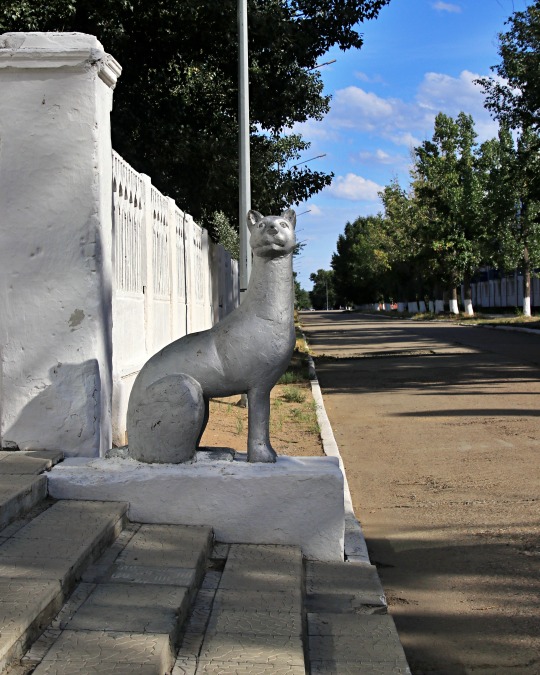



post-soviet town Kurchatov ( Kazakhstan ) - the former operations center for the adjoining Semipalatinsk Nuclear Test Site
#travelphotography#photooftheday#adventure#aroundtheworld#atom bomb#nuclearpolygon#semipalatynsktestsite#kurchatov#travel#pickoftheday#explore#kazakhstantravel#nuclear test#nucleartestsite#nature#central asia#landscape#kazakhstan#trip#soviet architecture#ussr#cccp#soviet union#soviet
5 notes
·
View notes
Note
Uuuh, can you give me some lore on that nuclear capable missile?
We talking the air to ground missile or the ground to air missile or the air to air missile?
Let's go over the final first.
The Douglas AIR-2 Genie was an unguided air-to-air rocket with a 1.5 kt W25 nuclear warhead. It was deployed by the United States Air Force (USAF 1957–1985) and Canada (Royal Canadian Air Force 1965–68, Air Command 1968–84) during the Cold War. Production ended in 1962 after over 3000 were made, with some related training and test derivatives being produced later.
The interception of Soviet strategic bombers was a major military preoccupation of the late 1940s and 1950s. The revelation in 1947 that the Soviet Union had produced a reverse-engineered copy of the Boeing B-29 Superfortress, the Tupolev Tu-4, which could reach the continental United States in a one-way attack, followed by the Soviets developing their own atomic bomb in 1949, produced considerable anxiety.
The World War II-age fighter armament of machine guns and cannon were inadequate to stop attacks by massed formations of high-speed bombers. Firing large volleys of unguided rockets into bomber formations was not much better, and true air-to-air missiles were in their infancy. In 1954 Douglas Aircraft began a program to investigate the possibility of a nuclear-armed air-to-air weapon. To ensure simplicity and reliability, the weapon would be unguided, since the large blast radius made precise accuracy unnecessary.
The then top-secret project had various code names, such as Bird Dog, Ding Dong, and High Card. Full-scale development began in 1955, with test firing of inert warhead rockets commencing in early 1956.
The final design carried a 1.5-kiloton W25 nuclear warhead and was powered by a Thiokol SR49-TC-1 solid-fuel rocket engine of 162 kN thrust, sufficient to accelerate the rocket to Mach 3.3 during its two-second burn.
Total flight time was about 12 seconds, during which time the rocket covered 10 km (6.2 mi). Targeting, arming, and firing of the weapon were coordinated by the launch aircraft's fire-control system. Detonation was by time-delay fuze, although the fuzing mechanism would not arm the warhead until engine burn-out, to give the launch aircraft sufficient time to turn and escape.
However, there was no mechanism for disarming the warhead after launch. Lethal radius of the blast was estimated to be about 300 metres (980 ft). Once fired, the Genie's short flight-time and large blast radius made it virtually impossible for a bomber to avoid destruction.
The new rocket entered service with the designation MB-1 Genie in 1957. The first interceptor squadrons to carry the MB-1 declared initial operational capability on 1 Jan. 1957, when a handful of rockets and 15 F-89 interceptors capable of carrying them were deployed at Wurtsmith Air Force Base in northern Michigan and Hamilton Air Force Base outside of San Francisco. By the next year, 268 F-89s had received the necessary wing pylon and fire-control system modifications to carry the weapon.
While officially known as the MB-1 Genie, the rocket was often nicknamed "Ding-Dong" by crews and pilots. About 3150 Genie rockets were produced before production ended in 1963. In 1962 the weapon was redesignated AIR-2A Genie. Many rounds were upgraded with improved, longer-duration rocket motors; the upgraded weapons sometimes known as AIR-2B. An inert training round, originally MB-1-T and later ATR-2A, was also produced in small numbers – the training version was known to Canadian crews as the "dum-dum".
A live Genie was detonated only once, in Operation Plumbbob on 19 July 1957. It was fired by USAF Captain Eric William Hutchison (pilot) and USAF Captain Alfred C. Barbee (radar operator) flying an F-89J over Yucca Flats.
Sources vary as to the height of the blast, but it was between 18'500 and 20'000 ft above mean sea level. A group of five USAF officers volunteered to stand uncovered in their light summer uniforms underneath the blast to prove that the weapon was safe for use in populated areas. Gamma and neutron doses received by observers on the ground were negligible. Doses received by aircrew were highest for the fliers assigned to penetrate the airburst cloud ten minutes after explosion.
The only other Genie user was Canada, whose CF-101 Voodoos carried Genies until 1984 via a dual-key arrangement where the missiles were kept under United States custody, and released to Canada under circumstances requiring their use. The RAF briefly considered the missile for use on the English Electric Lightning.
Now onto the ground to air missiles.
The CIM-10 BOMARC was a supersonic ramjet powered long-range surface-to-air missile used during the Cold War for the air defense of North America. In addition to being the first operational long-range SAM and the first operational pulse doppler aviation radar, it was the only SAM deployed by the United States Air Force.
However, two squadrons of these were purchased and deployed by the Canadian government in 1958, and were modified to carry a nuclear payload, designed like the air to air missile to detonate on a fuse between enemy bombers. This was part of Canada's role during the Cold War to defend North America against an attack from the Soviet Union.
Unfortunately Prime Minister John Deifenbaker refused to allow the nuclear-armed missiles to be used, opting to use non nuclear options over Canadian soil, souring Canada's relationship with the US, and upon the Cuban missile crisis he lost reelection as his cabinet was split over his decision to disarm the nuclear ground to air anti aircraft missiles, the coward.
Now, onto the air to ground missile.
The North American Aviation AGM-28 Hound Dog was a supersonic, turbojet-propelled, nuclear armed, air-launched cruise missile developed in 1959 for the United States Air Force.
It was primarily designed to be capable of attacking Soviet ground-based air defense sites prior to a potential air attack by B-52 Stratofortress long range bombers during the Cold War.
The thermonuclear warhead carried by the Hound Dog was the W28 Class D. The W28 warhead could be preset to yield an explosive power of between 70 kilotons and 1.45 megatons.
Detonation of the Hound Dog's W28 warhead could be programmed to occur on impact (ground burst) or air burst at a preset altitude. An air burst would have been used against a large area, soft target. A surface impact would have been used against a hard target such as a missile site or command and control center.
The Hound Dog could be launched from the B-52 Stratofortress at high altitudes or low altitudes, but not below 5000 feet in altitude.
One Hound Dog missile crashed near the town of Samson, Alabama, when it failed to self-destruct after a test launch from Eglin Air Force Base. In 1962, a Hound Dog was accidentally dropped to the ground during an underwing systems check.
In May 1962, operation "Silk Hat" was conducted at Eglin Air Force Base. During this exercise, a Hound Dog test launch was conducted before an audience of national and international dignitaries headed by President John F. Kennedy and Vice-President Lyndon B. Johnson.
After thirteen years of service with the Air Force, the last Hound Dog missile was removed from alert deployment on June 30, 1975.
7 notes
·
View notes
Text
Project Mogul/Spy balloons

Project Mogul (sometimes referred to as Operation Mogul) was a top secret project by the US Army Air Forces involving microphones flown on high-altitude balloons, whose primary purpose was long-distance detection of sound waves generated by Soviet atomic bomb tests. The project was carried out from 1947 until early 1949. It was a classified portion of an unclassified project by New York University (NYU) atmospheric researchers.[1] The project was moderately successful, but was very expensive and was superseded by a network of seismic detectors and air sampling for fallout, which were cheaper, more reliable, and easier to deploy and operate.
Project Mogul was conceived by Maurice Ewing who had earlier researched the deep sound channel in the oceans and theorized that a similar sound channel existed in the upper atmosphere: a certain height where the air pressure and temperature result in minimal speed of sound, so that sound waves would propagate and stay in that channel due to refraction. The project involved arrays of balloons carrying disc microphones and radio transmitters to relay the signals to the ground. It was supervised by James Peoples, who was assisted by Albert P. Crary.
One of the requirements of the balloons was that they maintain a relatively constant altitude over a prolonged period of time. Thus instrumentation had to be developed to maintain such constant altitudes, such as pressure sensors controlling the release of ballast.
The early Mogul balloons consisted of large clusters of rubber meteorological balloons, however, these were quickly replaced by enormous balloons made of polyethylene plastic. These were more durable, leaked less helium, and also were better at maintaining a constant altitude than the early rubber balloons. Constant-altitude-control and polyethylene balloons were the two major innovations of Project Mogul.
https://en.wikipedia.org/wiki/Project_Mogul
#project mogul#spy balloon#roswell#mogul#popular mechanics#Mechanix Illustrated#popular science#modern mechanics
15 notes
·
View notes
Text
sorry gotta complain again but another soviet poster from 1967 "let the atom be a worker not a soldier" oh yeah that's why you kept bombing semipalatinsk since 1949 so by the poster's time for 18 years and that's why you picked the "empty" steppe to try your nuclear testing in regardless of the fact that the land wasn't yours to ruin and there were settlements nearby that could still be affected and you didn't warn the locals even though they were absolutely affected by nuclear fallout and ended up with higher rates of leukaemia and cancer years later and so would their children (if they survived at all) and that's why you ruined the local ecology the flora and fauna and that's why the area around the polygon is still ruined over 30 years later since its closure
3 notes
·
View notes
Text
'Nuclear physicist Ernest Lawrence, portrayed by Josh Hartnett in Christopher Nolan's Oppenheimer, continued his ambitious scientific pursuits and advocacy after the events that took place in the film. Once a close friend and associate of theoretical physicist J. Robert Oppenheimer on the infamous Manhattan Project, Lawrence became a central figure in the advancement of institutionalized and government-funded support of scientific programs which was eventually referred to as Big Science.
Lawrence and Oppenheimer were close enough throughout their lifetimes that he named one of his sons, Robert, after the father of the atomic bomb. The scientific collaborators met at the prestigious UC Berkeley where Lawrence first expressed his concerns for Oppenheimer's questionable political affiliations and sensibilities. At the end of Oppenheimer, Lawrence withdraws from testifying against his colleague at his security clearance hearing, claiming to have fallen ill due to colitis. This is the last time that Lawrence appears in the film, raising the question of what the physicist did with the rest of his life.
What Ernest Lawrence Did After Oppenheimer's Security Clearance Hearing
After not participating in Oppenheimer's four-week security clearance hearing in 1954, Ernest Lawrence worked closely with President Dwight D. Eisenhower as a representative of government-endorsed scientific and technological advancements. The President requested Lawrence's presence in Geneva, Switzerland in order to help establish a Partial Nuclear Test Ban Treaty with the Soviet Union during the height of the Cold War, an effort that Oppenheimer himself voiced strong opinions in favor of following the end of World War II. Lawrence was recommended by Lewis Strauss of the AEC to travel to Switzerland with the President with the diplomatic proposal.
Ernest Lawrence Died In 1958
Despite having recurring illnesses from his chronic colitis, which got him out of testifying against Oppenheimer in 1954, Lawrence found the significance of accompanying President Eisenhower and decided to go. During the trip, Lawrence has a serious flare-up that required immediate medical attention. He was flown back to the Palo Alto Hospital at Stanford University where he had much of his large intestine removed in a drastic effort to save his life. The surgeons discovered other complications and troubling signs during the procedure that pointed to atherosclerosis in one of his arteries.
Only a month after leaving for Geneva, Lawrence died on August 27, 1958 at age 57. The University of California at Berkeley renamed two of its nuclear research laboratories after Lawrence. An award was immediately created in his honor to acknowledge the future achievements of other great scientists. Lawrencium, the 103rd known chemical element of the periodic table, was named after him. His portrayal in Oppenheimer by Josh Hartnett reaffirms his legacy and significance in the world of 20th-century physics and the outcome of World War II.'
#Ernest Lawrence#Oppenheimer#Josh Hartnett#Christopher Nolan#President Eisenhower#The Manhattan Project#Lawrencium
2 notes
·
View notes